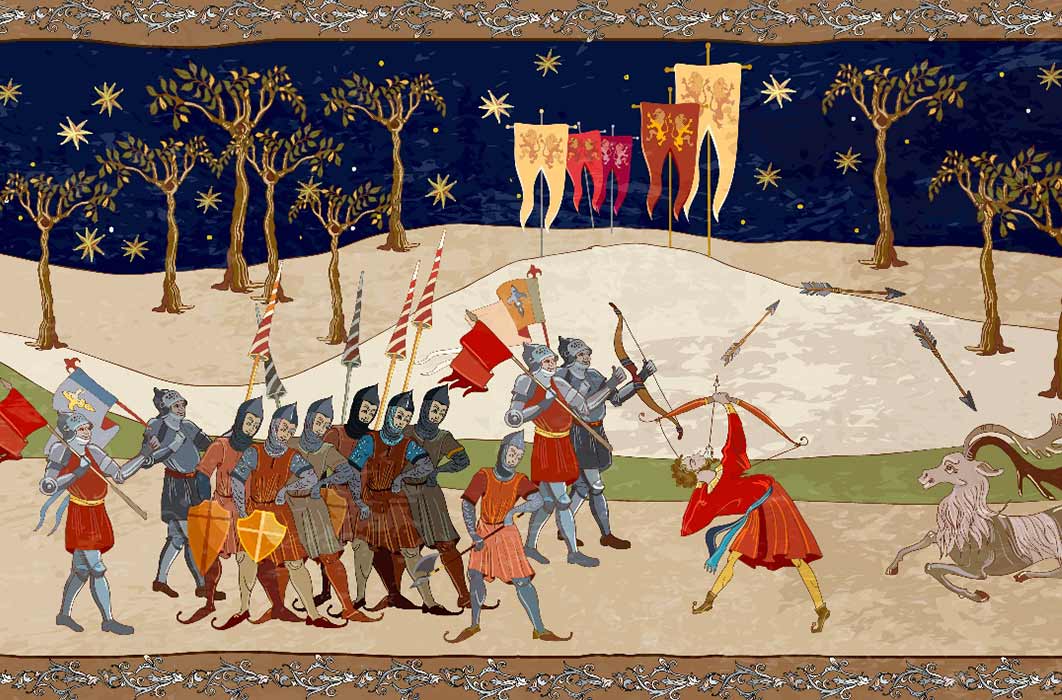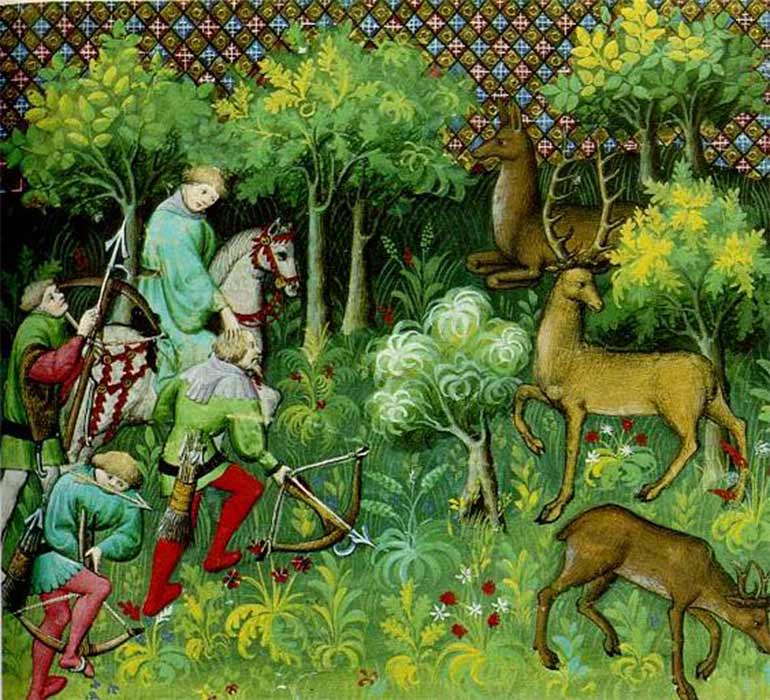
Venturing Into The Symbolic Landscape Of Robin Hood’s Sherwood Forest
The site of Sherwood Forest, legendary home of ‘Robin Hood and his Merry Men’ lies a bit more than 240 kilometers (150 miles) west of London. In the 1200s, which is usually considered by many to be the time Robin trod these woods, Sherwood covered more than 100,000 acres, roughly a fifth of the county known as Nottinghamshire. Evidence of flint tools used by pre-historic hunter-gatherers have been dug up, indicating the area has been popular for thousands of years. It had been a wooded forest ever since the end of the last glacial epoch and was considered a private royal hunting ground. Any wild game was considered the property of the king, so when a commoner killed game for his family’s table, he was considered a poacher. Eating ‘the king’s deer’ was a capital offence, punishable by severe methods, including death.

Medieval forest scene, from the Livre de chasse (1387) (Public Domain)
Running right through the middle of the forest lay the Great North Way, a highway of sorts connecting London and York. Any travelers usually went heavily armed in order to protect themselves from robbers who lived outside the law. Ever since those times, such thieves have been called ‘outlaws’.





